"So doth history repeat itself"
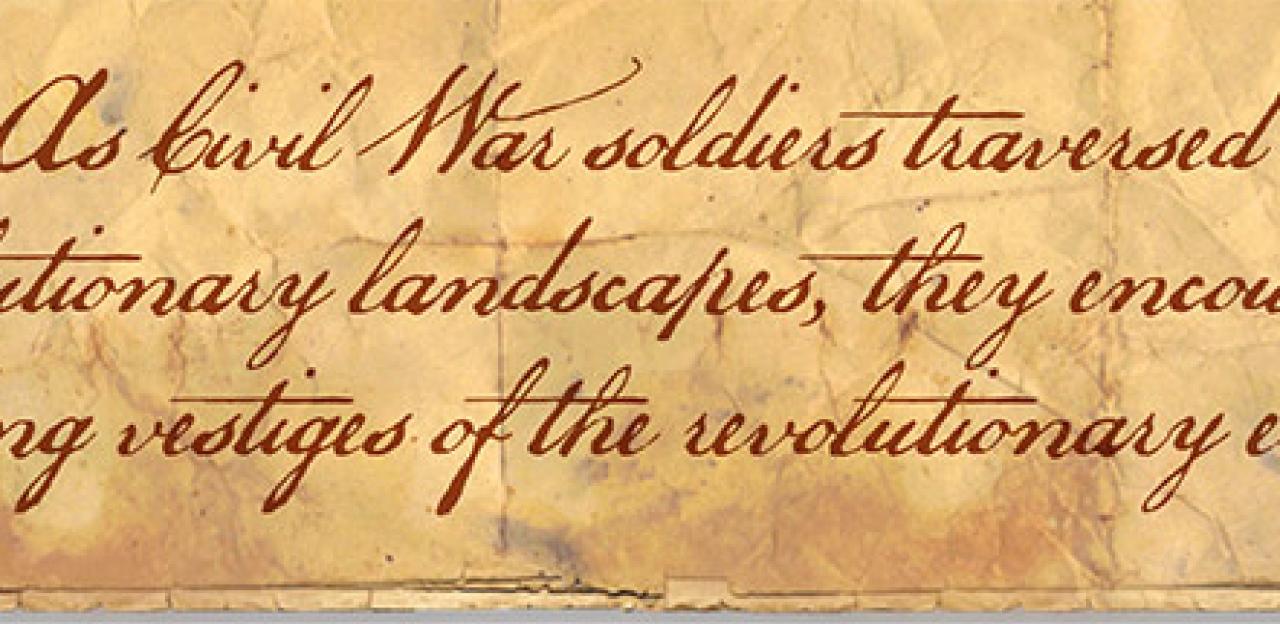

“If you are in Vicksburg, glory, hallelujah! The best Fourth of July since 1776.”
-W.T. Sherman to U.S. Grant, July 3, 1863
Was the American Revolution really on Sherman and Grant’s minds in July 1863? Certainly, they couldn’t help but think about the ramifications of their campaign, and the effect its outcome would have on American history. The tendency to contemplate the two conflicts in tandem continues today; many scholars of American history look upon the Civil War as a continuation of the American Revolution. Historian Peter S. Carmichael asserts that Confederates “proclaimed their nation to be the keeper of America’s revolutionary heritage.” Similarly, James McPherson has noted that “Union volunteers invoked the legacy of the Founding Fathers … if disunion destroyed this nation, the generation of 1861 would prove unworthy of the heritage of republican liberty.”
Was the American Revolution really on Sherman and Grant’s minds in July 1863? Certainly, they couldn’t help but think about the ramifications of their campaign, and the effect its outcome would have on American history. The tendency to contemplate the two conflicts in tandem continues today; many scholars of American history look upon the Civil War as a continuation of the American Revolution. Historian Peter S. Carmichael asserts that Confederates “proclaimed their nation to be the keeper of America’s revolutionary heritage.” Similarly, James McPherson has noted that “Union volunteers invoked the legacy of the Founding Fathers … if disunion destroyed this nation, the generation of 1861 would prove unworthy of the heritage of republican liberty.”
The association between the American Revolution and the Civil War began even before the first shots were fired on Fort Sumter. Maj. Robert Anderson wrote from Fort Moultrie on November 28, 1860, less than five months before the first shots of the Civil War, “There appears to be a romantic desire urging the South Carolinians to have possession of this work, which was so nobly defended by their ancestors in 1776.” The connection to the American Revolution and the “Spirit of ’76” felt by Civil War soldiers on both sides of the conflict was ancestral. Robert E. Lee was married to the great-granddaughter of Martha Washington, while Winfield Scott, “Old Fuss and Feathers,” was the son of a Revolutionary War captain.
The connections to the Revolution were also ideological. “The Confederate States of 1861 are acting over again the history of the American Revolution of 1776,” ran a submission in the Rebellion Record, published in New York in 1864 under the headline “Recurring to First Principles.” The author continued, “[T]he resistance of the south has been based on the same eternal principles which justified and glorified the patriots of 1776.” Washington, Jefferson and Richard Henry Lee were all Southerners — the Confederate States of America saw themselves as acting in their honor.
Further, Confederate sympathizers saw a connection between their own civil war and the civil war that raged during the Southern Campaign of the American Revolution, which saw brother fighting against brother as patriot forces converged on loyalist armies in the South. The popular memory of these guerilla warfare skirmishes, led by men such as Daniel Morgan and Francis Marion, “the Swamp Fox,” influenced Civil War tactics. A General Order issued by Assistant Adjutant-General Thomas Jordan in Jackson, Tennessee, on March 14, 1862, acting under the command of Gen. P.G.T. Beauregard, provided that “the men must be instructed and required each one to single out his mark. It was the deliberate sharpshooting of our forefathers in the Revolution of 1776 … which made them so formidable against the odds with which they were engaged.”
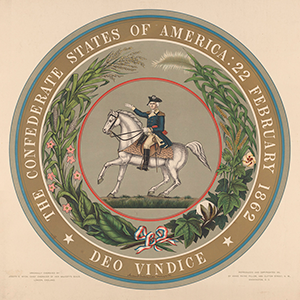
Both the Union and Confederacy utilized iconography of the American Revolution to propagate their cause. George Washington’s image appeared on both the Great Seal of the Confederacy and various Union stationery and letterhead. Confederate Maj. Gen. Bushrod R. Johnson described a flag his unit captured from the 113th Regiment of the New York State Volunteers in a report published in the Richmond Examiner, “[E]ither face of the banner bears a painting of illustrative battle scenes in the Revolutionary war, with the figure of George Washington in the foreground.” The Continental Morgan Guard, which took as its namesake the Revolutionary War hero Daniel Morgan, modeled its blue coat with buff lapels after the uniform of the Continental Army, also donning tricorn hats and breeches. Similarly, a tintype of an unidentified Confederate soldier in the collections of the Library of Congress shows the soldier’s fashion of a shell jacket paired with a tricorn hat.
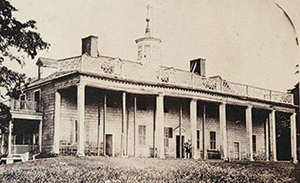
Civil War soldiers’ connections to the ideals of the American Revolution grew even stronger when their marches and battles brought them close to and even directly onto the landscapes and landmarks sacred to the memory of the American Revolution. On these landscapes, soldiers were quick to identify the cause of the Revolution as their own. Nowhere was this more evident than in Virginia, where the physical geography of the two conflicts overlapped so significantly. As soldiers converged on Mount Vernon, Williamsburg and Yorktown, the connections they made to the revolutionary past of these locations strengthened their own resolve.
Soldiers on both sides of the war were sympathetic to the preservation of the sacred grounds of Mount Vernon. On July 31, 1861, Commanding General of the U.S. Army Winfield Scott issued General Order No. 13, urging both “patriots” and “rebels” to honor the memory and remains of George Washington as the war moved closer to Mount Vernon: “Should the operations of the war take the United States troops in that direction, the General-in-Chief does not doubt that each and every man will approach with due reverence, and leave uninjured not only the tomb, but also the house, the groves, and walks, which were so loved by the best and greatest of men.”
Valerius Cincinnatus Giles, a soldier in the 4th Texas Company B, could not help but make the connection between the American Revolution and the war in which he was now engaged as he marched through Williamsburg in 1862. Walking through the streets of the old colonial capital, Giles remembered, “We sallied forth to inspect William and Mary college where two presidents and Patrick Henry got their inspiration for American independence, the very thing that we were struggling for.” Though Patrick Henry delivered his immortal speech 60 miles west in Richmond, it was easy for Giles to conflate his memory of revolutionary history at Williamsburg, which served as the capitol of Virginia until 1780 and saw the muster of the First Virginia Regiment under Patrick Henry in 1775, along with the occupation of the British army in 1781.
Tipton Davis Jennings, a soldier in Company G of the 11th Virginia Infantry, also remembered the American Revolution in his account of “Incidents in the Battle at Williamsburg,” which appeared in the Confederate Veteran Magazine in 1897. “Just then,” he wrote, “we happened upon what was apparently an ancient line of grass-grown earthworks. We learned afterward that portions of Washington’s line of entrenchment were yet discernible thereabouts. And so it is possible that we ragged ‘Rebs’ were actually defending the same works were [sic] once stood the ragged continental ‘Rebs’ fighting, the hessian of Europe, as we were now, some eighty years later. So doth history repeat itself.”
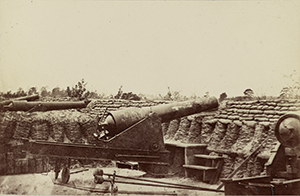
Just as in the American Revolution, Yorktown saw a major engagement during the Civil War. During the Peninsula Campaign, the remnants of the original 18th-century earthworks at Yorktown were part of three separate defensive lines dug across the Virginia peninsula to prevent the Union Army from advancing upon Richmond from the east. The significance of this positioning was not lost on Civil War soldiers. Maj. Gen. D.H. Hill saw himself and his men in the image of Washington’s army when he wrote on January 11, 1863, about Yorktown that “Our revolutionary sires did not suffer more at Valley Forge than did our army at Yorktown and in the retreat from it.” Similarly, Confederate Maj. Gen. John Bankhead Magruder invoked the sense of place and memory of the revolution while addressing his troops at Yorktown. As the enlistments of his already small Army of the Peninsula were about to expire, Magruder urged, “[T]he long war of the Revolution culminated at length in victorious triumph on these very plains of Yorktown. These frowning battlements on the heights of York are turned, in this second war of liberty, against the enemies of our country. You breathe the air and tread the soil consecrated by the presence and the heroism of our patriotic sires. Shall we, their sons, imitate their example, or basely bow the neck to the yoke of the oppressor?”
As Civil War soldiers traversed revolutionary landscapes, they encountered living vestiges of the revolutionary era. On March 28, 1862, Col. John Kennett of the Fourth Ohio Cavalry reported that in Tennessee, “A Mrs. Graham, eighty years of age, with tears in her eyes, welcomed us with a blessing….Her husband fought in the revolutionary war. She venerated the old flag. She would not and could not live under any other government, nor should any other flag wave over her head. She with her own hands tore down from the court-house the first secession flag at Shelbyville.”
As the Civil War threatened to rip apart the nation, the last survivors of the Revolutionary era, most of them centurions, were passing away. For his 1864 book, The Last Men of the Revolution, Elias Brewster Hillard interviewed four veterans — Samuel Downing, Lemuel Cook and Alexander Milliner, all of New York, and William Hutchings of Maine — and was not shy asking about the current conflict. They, in turn, vehemently condemned the uprising, with Cook declaring “[I]t is terrible, but, terrible as it is, the rebellion must be put down!”
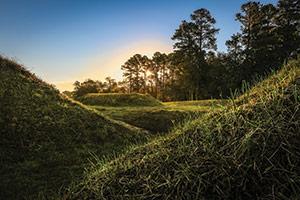
Whether clad in blue or in gray, Civil War soldiers donned tricorn hats, venerated sacred landscapes and called George Washington down to their side of the argument. Soldiers of both the Union and the Confederacy fought for liberty and the rights of themselves and others, and both sides treated the Civil War as a war to secure the earnings of the American Revolution. Yet, arguably, the implications of the American Revolution were most omnipresent in the ranks of the United States Colored Troops, who now stood to correct the most egregious error made by the Founding Fathers. At Camp Nelson, Kentucky, Sgt. Elijah Marrs of the 12th United States Colored Heavy Artillery commented, “I can stand this said I … this is better than slavery, though I do march in line at the tap of a drum. I felt freedom in my bones, and when I saw the American eagle with outspread wings, upon the American flag, with the motto E Pluribus Unum, the thought came to me, ‘Give me liberty or give me death.’”


